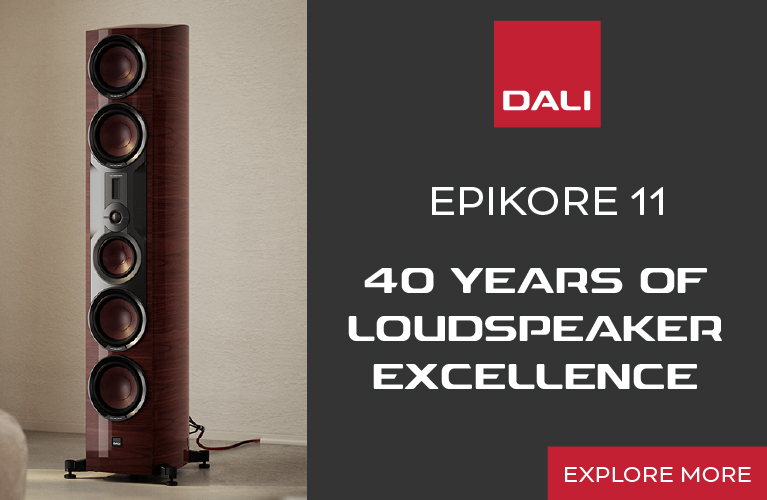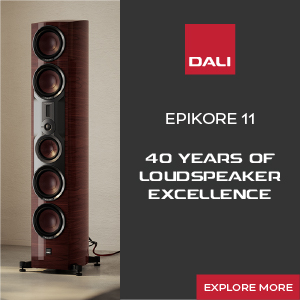Originally published on SoundStage! Xperience
Sennheiser HD 800 S measurements can be found by clicking this link.
 It’s not often that most enthusiasts and professional reviewers agree about a set of headphones, but it happened in 2009, when Sennheiser’s model HD 800 ($1399) was introduced. “I don’t love them, but I respect them,” one of my favorite reviewers told me. Most people thought the HD 800s sounded admirably spacious, but lacked sufficient bass and seemed to highlight flaws in recordings. I heard them at a couple of audio shows and came to the same conclusion -- in fact, after hearing so many initial reports saying the same thing, I decided against reviewing them, worrying that I’d have nothing new to add to the conversation.
It’s not often that most enthusiasts and professional reviewers agree about a set of headphones, but it happened in 2009, when Sennheiser’s model HD 800 ($1399) was introduced. “I don’t love them, but I respect them,” one of my favorite reviewers told me. Most people thought the HD 800s sounded admirably spacious, but lacked sufficient bass and seemed to highlight flaws in recordings. I heard them at a couple of audio shows and came to the same conclusion -- in fact, after hearing so many initial reports saying the same thing, I decided against reviewing them, worrying that I’d have nothing new to add to the conversation.
Sennheiser listened. The HD 800 S headphones ($1699) are a revoiced version of the HD 800. The goal was to give the new model a more natural, more full, more forgiving tonal balance. Both models have the same open-back frame (the HD 800 Ses are black, the HD 800s silver) and, apparently, the same, huge 2.2” (56mm) drivers. Both are hand-built at Sennheiser’s headquarters in Germany.
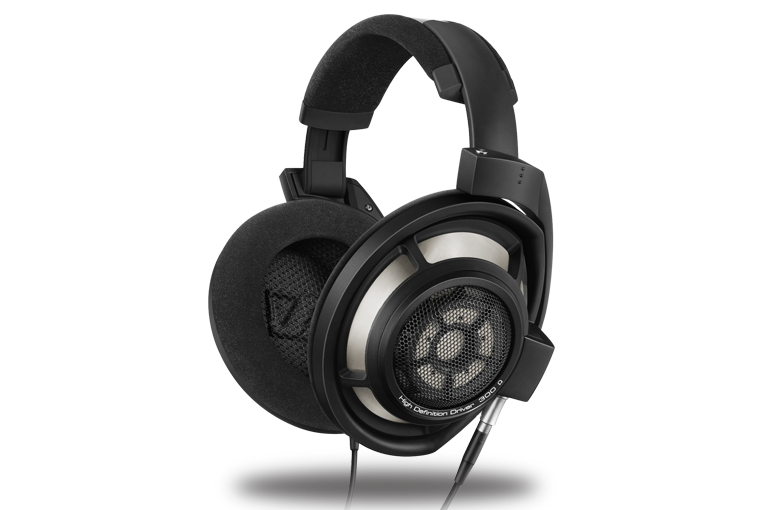
According to a response graph in the manual, the HD 800 Ses have about 1.5dB more bass output below 150Hz than the HD 800s, about 3dB less mid-treble output between 5.6 and 7.1kHz, and about 1dB less upper treble above 12kHz. At the 2016 Consumer Electronics Show, a Sennheiser rep told me that the HD 800 Ses are about 3dB more sensitive than the HD 800s, which would allow them to play louder given the same amount of power -- but the manual lists the sensitivity for both as 102dB at 1V (3.3mW at the rated 300 ohms impedance).
Another difference is that the HD 800 Ses include an additional cable tipped with a four-pin XLR connector, for use with headphone amplifiers offering balanced output. An otherwise identical cable tipped with the more common 1/4” (6.3mm) plug is also included.
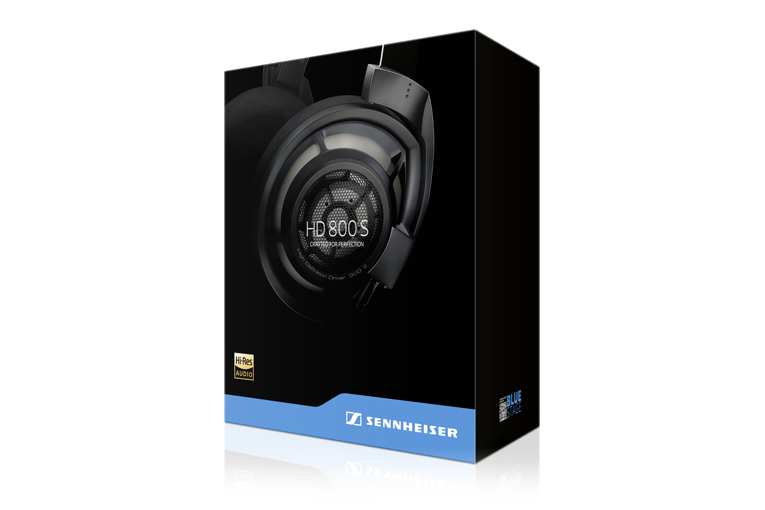
At CES 2016, I compared the HD 800 Ses directly with the original HD 800s, and knew right away that I much preferred the new model. I immediately asked for a review sample.
In the box
The HD 800 Ses come with fewer accessories than some less-expensive models. They’re designed specifically for use at home, driven by a good headphone amplifier. There’s no carrying case, but they do come in a nice storage/presentation box. As stated above, two cables are included, each 3.25’ (3m) long.
Use
The HD 800 Ses easily rank among the most comfortable headphones I’ve worn. They’re lighter than many other large, open-back, high-end designs, the headband’s clamping force is minimal, and the covering on the earpads didn’t make my skin itch or sweat.
The only real challenge these headphones present in daily use is that they require a decent headphone amplifier. The HD 800 Ses’ specified impedance is 300 ohms; I measured an average of about 400 ohms. To put this in perspective, typical headphones usually run between 20 and 50 ohms impedance. Even though the Sennheisers’ sensitivity is very good for high-end headphones, their high impedance mandates that the headphone amp be able to deliver more voltage than most headphones need. A set of 300-ohm headphones requires an additional 9.7dB of voltage gain from the amp to achieve the same listening volume as 32-ohm headphones of the same sensitivity, and that’s more than most portable devices, computers, and inexpensive headphone amps can deliver.
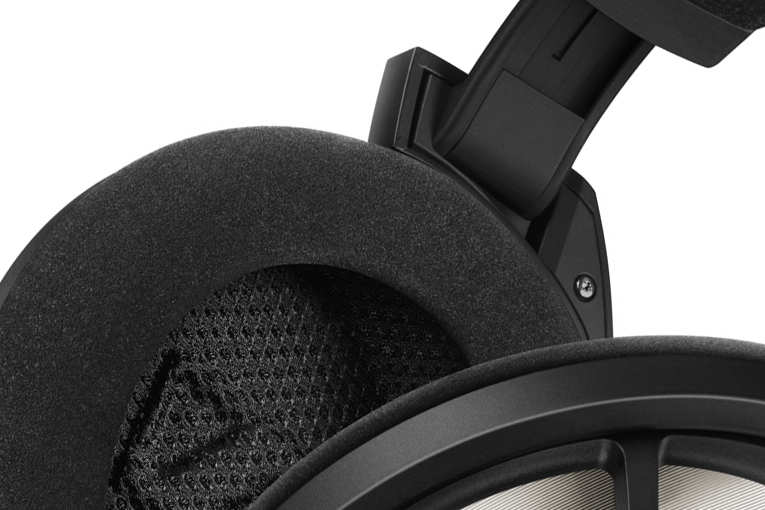
I did much of my evaluating with my Musical Fidelity V-Can headphone amp, driven by a Musical Fidelity V90-DAC. The V-Can, a competent but modestly priced amplifier ($199 when available), had no problem driving the HD 800 Ses to higher levels than I could stand to listen to for more than a few seconds.
Sound
Considering that Sennheiser promised a fuller sound with the HD 800 Ses, I thought a nice place to start my evaluation would be with Three’s Company, a trio comprising saxophonist Javon Jackson, drummer Billy Drummond, and, most critically in this case, double bassist Ron Carter. Their We’ll Be Together Again (24-bit/96kHz FLAC, Chesky) is a binaural recording that captures the group playing in a big, ambient space -- and it’s better in some ways than hearing Carter live, because here his bass was unamplified, and allowed to resonate naturally in that space without the sonic filtering of an electronic pickup. Carter is one of the most recorded bassists in jazz history, and this is my favorite of the countless recordings I have of him.
I’ve heard double basses played unamplified countless times (and played a few of them myself), so I’m very familiar with their sound. Through the HD 800 Ses, Carter’s bass sounded like . . . well, like a really nice old double bass played by Ron Carter: full but with no trace of boom, it filled my ears with that lovely “woody” resonance for which the best basses command staggering prices. Especially in the wonderful title track, I could easily follow every subtlety of Carter’s fingering and plucking, and all the extra fills and harmonic and rhythmic accents he throws in to fill the musical space normally occupied by a piano.
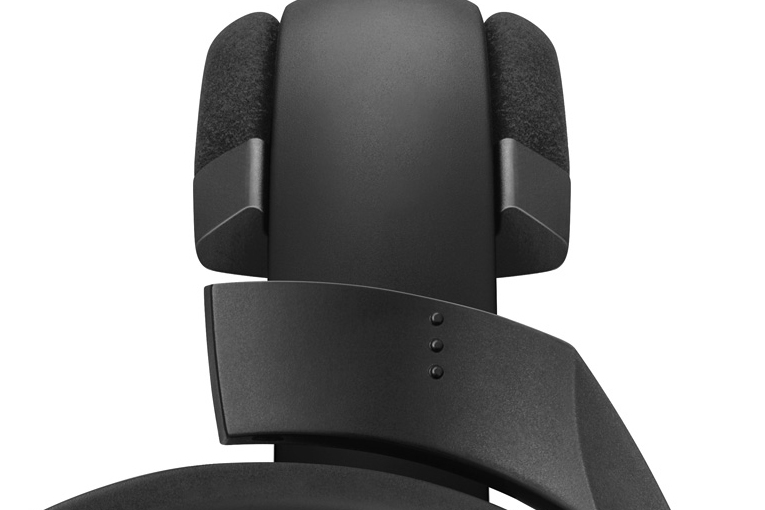
Jackson’s tenor sax sounded just as organic as Carter’s bass, with no emphasis of the natural “spittiness,” breath sounds, and mechanical noise that I too often hear when listening to recordings of saxophones through audiophile-oriented headphones. I did notice that Drummond’s brushwork sounded just slightly soft in the very high frequencies; other headphones I tried brought out more of the detail of the wire brushes scraping against his cymbals, but I can’t say which sounded more like a live performance.
However, another recording suggested that the HD 800 Ses’ mid- and lower-treble performance is among the very best, and is perhaps the best. Famed Memphis session guitarist Steve Cropper’s 1969 album, With a Little Help from My Friends (16/44.1 WAV, Volt), couldn’t be much more different from a Chesky recording. The sound is not what anyone would call clear or natural, but this album grooves as hard as anything you’ll ever hear. I played it to see if the HD 800 Ses would treat a substandard recording more kindly than would the HD 800s. On that count, the new model succeeded, delivering a satisfying, toe-tapping sound that didn’t augment or highlight the recording’s flaws, but didn’t conceal them, either.
As I listened to “I’d Rather Drink Muddy Water,” I heard something a little unusual going on in drummer Al Jackson Jr.’s sound; a closer listen told me he’d apparently placed a tambourine atop his hi-hat. Through the HD 800 Ses, the jangle of the tambourine was pretty easy to pick out. Of course, hundreds of audio-product reviews have included the sentence “With product x, I heard things in my favorite recordings I’d never heard before!” But any bad headphone or speaker with a big treble boost will have you hearing plenty of things you never heard before -- and that perhaps you weren’t meant to hear.
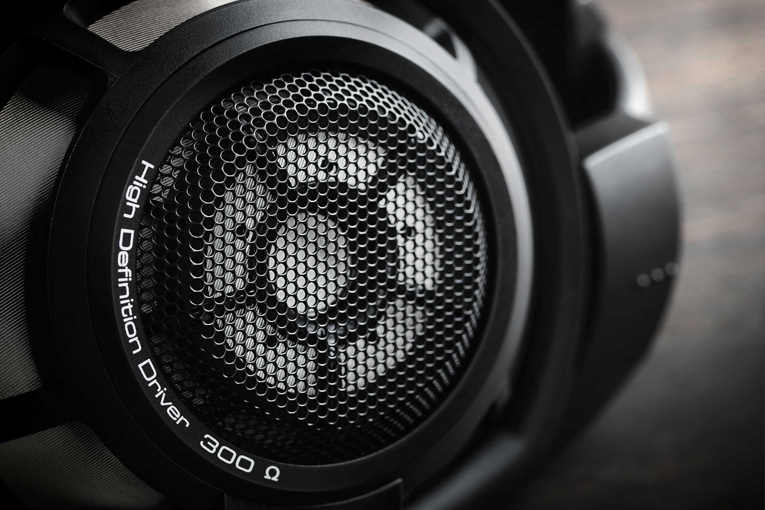
Wondering if the HD 800 Ses were just revealing the sound of Jackson’s tambourine by hyping the treble, I compared them with two well-regarded models in the same price range: HiFiMan Edition Xes ($1799) and the Audeze LCD-Xes ($1699). To my surprise, I couldn’t hear the tambourine through either of the other two headphones, yet the frequency responses and tonal balances of all three were close enough that none could be said to have an unnatural emphasis.
Hearing how similar the three models sounded, I decided a serious comparison was in order. Normally I don’t bother with formal level matching in headphone reviews, because they tend to have such varying frequency responses that one can sound louder than another even when the levels are matched with pink noise or shaped noise signals. But for this comparison I knew matching was essential, so I grabbed my Rane HC6S six-output professional headphone amp, which has a separate analog level control for each output. Then I used my G.R.A.S. Model 43AG ear/cheek simulator and Audiomatica Clio 10 FW analyzer to match the three headphones’ levels.
All three models sounded quite good but subtly different. On another Chesky recording, Dunnun Kan (24/96 FLAC), by Mangue Sylla and the All-Star Drummers of Guinea, I could more clearly hear the character of the HD 800 Ses’ treble. My favorite tune on this album, “Sogononkoun,” showed that the HD 800 Ses did indeed have a slightly soft upper treble compared with the other headphones -- but also that their midrange and lower treble were more vivid, especially when reproducing the sounds of the drummers banging on what sound like pieces of metal (I’m not an expert on Guinean percussion). In the same frequency range, the HiFiMan Edition Xes sounded more reserved. The Audeze LCD-Xes sounded the most dynamic, but didn’t match the HD 800 Ses’ midrange definition.
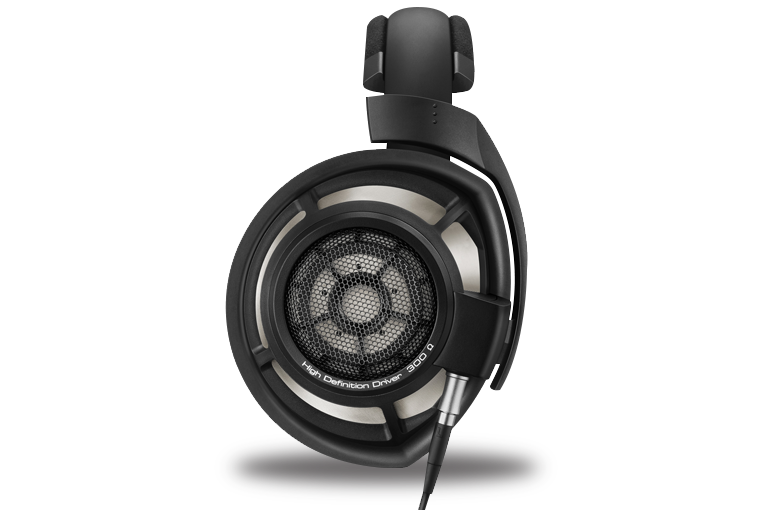
Flipping around on my audio computer, I stumbled on another recording that was about as lo-fi as the Steve Cropper: Eumir Deodato’s almost comically over-orchestrated -- yet musically awesome -- arrangement of Antonio Carlos Jobim’s “The Girl from Ipanema,” from Jobim’s 1970 album Tide (256kbps MP3, Verve). If you’re spent much time in elevators, you’ve almost certainly heard this recording. With this track, thick with brass, violins, and flutes, the HD 800 Ses sounded a little harsh and blaring compared with the other headphones -- more the kind of sound I’d expect from the original HD 800s. The Edition Xes sounded fuller, smoother, and more relaxed, while the LCD-Xes delivered the same impressive dynamics I’d heard before, plus a more vivid, detailed reproduction of the orchestra, without sounding harsh.
I went through several more comparisons and was often surprised by the results. For example, when I played the Band of Skulls’ colossal-sounding rock tune “Nightmares,” from Himalayan (256kbps MP3, Electric Blues), I expected the LCD-Xes’ dynamics to make them my top pick, but no -- their treble sounded a little closed-in, whereas the Edition Xes sounded more spacious, and the HD 800 Ses even more spacious.
Conclusion
Sennheiser’s HD 800 S headphones are clearly some of the best you can buy. Unless you’re a diehard basshead, or hate open-back headphones, or refuse to use a headphone amp, I can’t imagine you wouldn’t like them.
That said, you have a few comparably appealing options in this price range. I’ve already discussed the differences between the HD 800 Ses and a couple of their key competitors. In general, the HD 800 Ses have a little less bass, a little more midrange and lower-treble detail, and an upper treble that’s a bit softer. The HD 800 Ses’ spaciousness and imaging are probably about as good as headphones get, as is their comfortableness. I speculate that audiophiles who prefer a tonal balance that’s just subtly on the trebly side might find the HD 800 Ses nearly impossible to beat.
. . . Brent Butterworth
Associated Equipment
- Digital-to-analog converter -- Musical Fidelity V90-DAC
- Headphone amps -- Aurender Flow, Musical Fidelity V-Can, Rane HC6S
Sennheiser HD 800 S Headphones
Price: $1699 USD.
Warranty: Two years, repair or replacement.
Sennheiser Electronic GmbH & Co. KG
Am Labor 1
DE-30900 Wedemark
Germany
Phone: +49 (0)5130-600-0
Fax: +49 (0)5130-600-1300
Website: www.sennheiser.com
Sennheiser Electronic Corporation
1 Enterprise Drive
Old Lyme, CT 06371
USA
Phone: (877) 736-6434, (860) 434-9190
E-mail:



